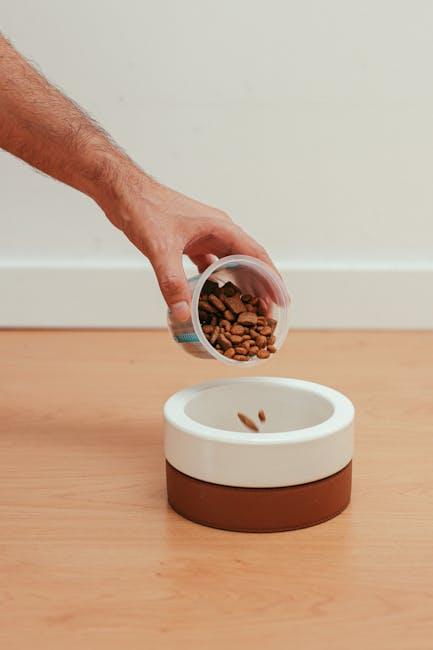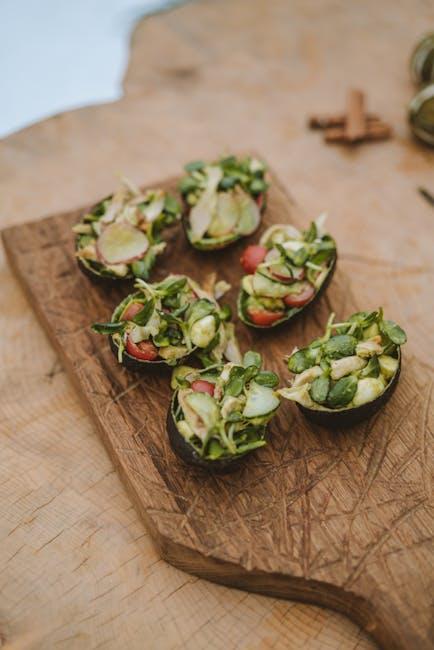Creating a balanced homemade diet for your beloved canine companion is a rewarding endeavor that not only caters to their unique nutritional needs but also strengthens the bond between you and your furry friend. As pet owners, we all want the best for our dogs, and preparing their meals at home allows us to have complete control over the quality and variety of ingredients they consume. In this guide, we’ll explore the essential components of a nutritious diet, provide tips on portion control, and highlight common pitfalls to avoid, all while ensuring your dog’s meals are both delicious and healthful. Whether you’re looking to address specific dietary concerns or simply wish to offer your pet a more personalized dining experience, this article will equip you with the knowledge and confidence to craft a wholesome menu that keeps tails wagging and hearts happy.
Understanding Your Dogs Nutritional Needs
Crafting a nutritious homemade diet for your furry friend can be a rewarding endeavor, offering them a variety of fresh, wholesome ingredients. To ensure your dog receives all the essential nutrients, it’s crucial to incorporate a balance of proteins, carbohydrates, fats, vitamins, and minerals. Consider including the following elements in your dog’s diet:
- Proteins: Essential for muscle development and repair, proteins can be sourced from lean meats like chicken, turkey, or beef. Fish and eggs are also excellent choices.
- Carbohydrates: Provide energy and aid in digestion. Brown rice, quinoa, and sweet potatoes are great options to include.
- Fats: Necessary for healthy skin and coat, as well as brain function. Healthy fats can be found in fish oils, flaxseed, and chicken fat.
- Vitamins and Minerals: Vital for overall health, these can be added through vegetables such as carrots, spinach, and peas. Ensure your dog’s meals are supplemented with calcium for bone health.
Remember, each dog is unique, so it’s important to tailor their diet to their specific needs, considering factors like age, weight, and activity level. Consulting with a veterinarian can provide guidance and reassurance that your homemade diet is both balanced and beneficial for your canine companion.

Selecting the Right Ingredients for Optimal Health
When crafting a homemade diet for your beloved canine, the key to success lies in choosing the right ingredients that ensure a balanced and nutritious meal. It’s essential to provide a variety of proteins, carbohydrates, fats, vitamins, and minerals to support your dog’s health and vitality. Consider including a mix of the following:
- Proteins: Opt for lean meats such as chicken, turkey, or beef. Fish like salmon or mackerel can also be beneficial, offering omega-3 fatty acids that support a healthy coat and skin.
- Carbohydrates: Incorporate complex carbs like brown rice, sweet potatoes, or quinoa to provide energy and fiber.
- Fats: Healthy fats are crucial. Use sources like fish oil, flaxseed, or small amounts of olive oil to promote joint health and cognitive function.
- Fruits and Vegetables: Add a variety of vegetables such as carrots, peas, and spinach for essential vitamins and minerals. Fruits like blueberries and apples (without seeds) offer antioxidants.
- Supplements: Depending on your dog’s specific needs, consider supplements like calcium or probiotics to ensure all nutritional bases are covered.
Always consult with a veterinarian or a pet nutritionist to tailor these ingredients to your dog’s unique needs, age, and health conditions, ensuring their homemade meals are both delightful and nourishing.

Preparing and Cooking Meals with Love and Care
Crafting a homemade diet for your beloved canine companion involves more than just tossing ingredients together. It’s about ensuring that each meal is packed with the nutrients necessary for their health and vitality. Start by focusing on protein, the cornerstone of a dog’s diet. Opt for lean meats like chicken, turkey, or beef, and occasionally incorporate fish for its omega-3 benefits. Pair these proteins with healthy carbohydrates such as sweet potatoes, brown rice, or quinoa to provide the energy your dog needs.
- Vegetables: Include a variety of veggies like carrots, peas, and spinach to add fiber and essential vitamins.
- Fruits: Small amounts of fruits such as blueberries or apples can be a delightful treat and an antioxidant boost.
- Supplements: Consider adding supplements like calcium or omega-3 oils to ensure a balanced diet.
Remember to cook the ingredients gently to retain their nutritional value, and always avoid foods toxic to dogs, such as chocolate, onions, and grapes. By putting love and care into every meal, you’re not just feeding your dog; you’re nurturing their well-being and happiness.

Monitoring Your Dogs Health and Adjusting the Diet
Ensuring your furry friend remains healthy involves vigilant observation and making necessary dietary adjustments. Pay attention to your dog’s energy levels, coat quality, and digestion. These are key indicators of their overall well-being. If you notice any changes, such as a dull coat or unusual lethargy, it may be time to reassess their diet. Here are some signs to watch for:
- Changes in stool consistency or frequency
- Weight gain or loss
- Itching or skin irritations
- Decreased energy or enthusiasm
When adjusting their diet, consider incorporating a variety of proteins, carbohydrates, and fats to maintain a balanced nutritional profile. Protein sources such as chicken, beef, or fish can be alternated to prevent allergies and provide different nutrients. Healthy fats like fish oil can improve skin and coat condition. Remember to introduce new foods gradually to avoid digestive upset. Always consult with your veterinarian to ensure dietary changes align with your dog’s specific health needs.

